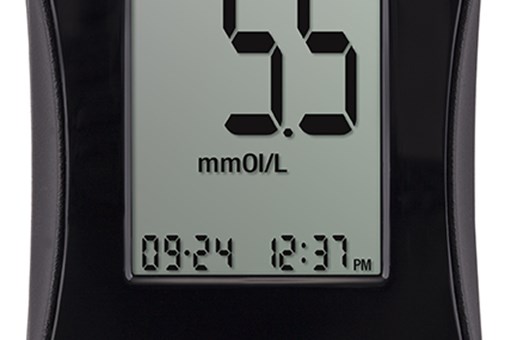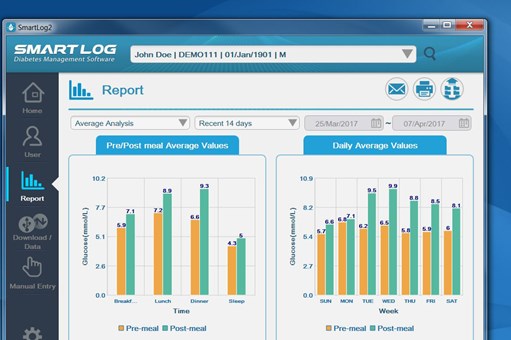What is HbA1c?
The HbA1c test is a measure of an average blood glucose (average blood sugar) level over the past few months and can be used as an indicator of your diabetes control. Inside the body the glucose (sugar) sticks to part of the red blood cells called haemoglobin – haemoglobin is what gives blood cells their red colour. This sugar-haemoglobin combination is called HbA1c. Once the red blood cells become ‘stuck’ to the sugar they stay stuck until the red blood cell dies. This takes about 3 months. As red blood cells die, new ones are produced. If the new red blood cells don’t end up with glucose stuck to them, because of better blood glucose control, then the overall HbA1c will decrease.
What do HbA1c tests measure?
The HbA1c counts the number of red blood cells that are attached to glucose. The results are measured as mmol/mol, which is different to your blood glucose test results that measures the amount of glucose freely circulating in the blood – and uses a different unit of measure, mmol/L.
How is HbA1c tested?
Unlike Blood Glucose levels that you do daily with a glucose meter, HbA1c tests need to be done by a health care professional. These are usually done every three months.
Why is testing HbA1c important?
HbA1c levels give doctors and those living with diabetes valuable information. HbA1c levels do not fluctuate quickly because once the red blood cells are attached to glucose; they remain that way until they die (up to 3 months). For this reason HbA1c levels give a picture of blood glucose control over a long period of time. HbA1c is the only proven indicator of a person’s risk of developing complications of diabetes.
So why still measure blood glucose levels?
HbA1c and Blood Glucose Levels give us two different sets of information. HbA1c provides information about the long-term glucose control to help with overall management of your diabetes. But it does not give us ‘real-time’ feedback. Blood Glucose levels gives information about the ’now’ – what is happening this very minute. It helps to identify the impact that diet, exercise, medication, stress and illness, for example, have on blood glucose levels. That means you can detect immediately any instances of hyperglycaemia or hypoglycaemia. This allows immediate changes to treatment such as insulin, food intake and activity levels.




